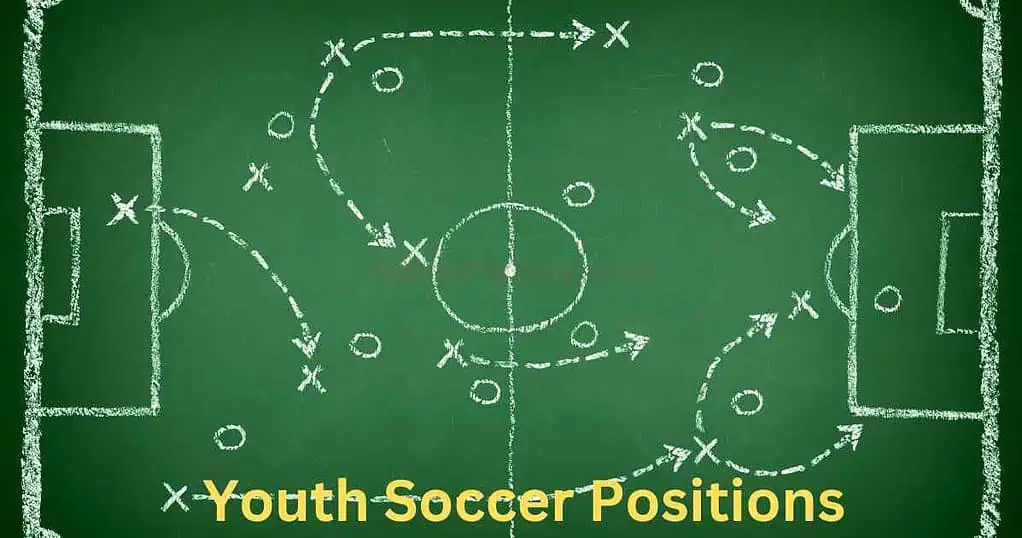Oh, hello there, dear football enthusiast! You must be here to unravel the mysterious world of soccer formations, and guess what?
You’ve come to the right place. So, buckle up and prepare for an educational ride through the tactics and strategies that make the beautiful game so… beautiful.
Importance of Soccer Formations
Imagine playing chess without a strategy, just randomly moving pieces across the board. That’s a soccer match without a proper formation!
Soccer formations provide structure, balance, and a strategic foundation for teams to build. In other words, they’re the secret sauce that turns a group of players into a well-oiled machine.
Key Aspects to Consider When Choosing a Formation
Before venturing into the expansive range of formations, remember each squad’s distinctive strengths and weaknesses.
As head coach, selecting an optimal arrangement that caters to your combat capabilities and adversary oversights while conforming to your match objectives is up to you. Don’t feel intimidated – it sounds simple on paper; however, let’s begin at square one!
The Basics of Soccer Formations
Definition and Purpose of Soccer Formations
A soccer formation is like a team’s tactical fingerprint. The arrangement of players on the field is often expressed as a sequence of numerals (e.g., 4-4-2).
Each number represents the presence or absence of a certain formation: defenders, midfielders, and strikers. Formations determine roles and assignments; consequently, they can profoundly affect strategy during play.
Factors Influencing Formation Selection
1. Team Strengths and Weaknesses
Understanding your team’s assets and pitfalls is essential. Are your forwards lethal in front of the goal? Is your defense rock-solid?
Understanding your team’s abilities will help you choose a formation that maximizes your strengths and minimizes your vulnerabilities.
2. Opponent Analysis
Sun Tzu advocated knowing one’s adversary, enabling one to triumph over a hundred battles. By analyzing an opponent’s tactics, strengths, and weaknesses, it is possible to gain an advantage in combat. Choose a formation that exploits their weak spots and neutralizes their strong points.
3. Match Objectives
Are you aiming for a draw, a narrow win, or a goal-fest? Your formation should align with your match objectives, whether solid defensively or going all-out attack.
Most Common Soccer Formations
4-4-2 Formation
Description and Roles
Ah, the venerable 4-4-2 formation, also known as the “English Formation.” You have four defenders and four midfielders encircling two attack-minded forwards.
Picture it as a stable, balanced, and straightforward formation that’s easy to understand.
Pros and Cons
With 4-4-2, you get a solid defensive line and a balanced midfield. However, with two forwards, it can be predictable and lack creativity in attack.
Famous Teams and Matches Using 4-4-2
Manchester United under Sir Alex Ferguson, anyone? This formation was the backbone of numerous title-winning campaigns.
4-3-3 Formation
Description and Roles
The 4-3-3 is an attacking formation featuring four defenders, three midfielders, and three forwards. Picture a majestic trident ready to pierce through the opposition’s defense.
With four players deployed in the back line and two central midfielders providing protection at the heart of our defense, it allows the wingers to unleash their creativity and attack our rivals.
Pros and Cons
Expect fluid attacking play and versatility, but be wary of leaving gaps in midfield and overloading the defense.
Famous Teams and Matches Using 4-3-3
Pep Guardiola’s Barcelona, aka the Tiki-Taka kings, mastered this formation, leaving opponents chasing shadows.
3-4-3 Formation
Description and Roles
The 3-4-3 is an adventurous formation with three defenders, four midfielders, and three forwards. Think of it as an offensive powerhouse, ready to unleash goals galore.
Pros and Cons
The 3-4-3 offers attacking flexibility and width, but beware – the three-man defense can be exposed if not properly coordinated.
Famous Teams and Matches Using 3-4-3
In the 2016-17 season, Antonio Conte’s Chelsea steamrolled the competition with this formation, securing the Premier League title.
4-5-1 Formation
Description and Roles
The 4-5-1 formation is a conventional setup in which four defenders, five midfielders, and one forward occupy the field. It’s like a fortress defensive formation, prioritizing defensive stability and midfield control.
Pros and Cons
This formation provides excellent defensive cover and midfield dominance but can be isolating for the lone forward.
Famous Teams and Matches Using 4-5-1
José Mourinho’s Inter Milan successfully employed the 4-5-1 to achieve a historic treble in the 2009-10 season.
4-3-2-1 Formation
Description and Roles
The 4-3-2-1, also known as the “Christmas Tree” formation, has four defenders, a three-man midfield, two attacking midfielders, and a single forward. It’s like an artistic masterpiece, showcasing creativity in attack.
Pros and Cons
Expect a creative and fluid attack but be cautious of being overrun on the wings due to the narrow formation.
Famous Teams and Matches Using 4-3-2-1
Carlo Ancelotti’s AC Milan, with the legendary Kaka, won the 2007 UEFA Champions League using this formation.
3-5-2 Formation
Description and Roles
The 3-5-2 is a versatile formation that can morph from defense to an attack in seconds. It’s like a chameleon, able to transform its form as needed and adapt quickly when the situation demands it.
Pros and Cons
This formation offers tactical flexibility and wing play but can expose the defense if the wing-backs are caught upfield.
Famous Teams and Matches Using 3-5-2
Juventus, under Massimiliano Allegri, was a force to be reckoned with using this formation, dominating Italian football in the process.
Famous Teams and Matches Using 3-5-2
During the 2006 FIFA World Cup, Italy’s national team, led by coach Marcello Lippi, hoisted the trophy using this dynamic formation.
Advanced Formations and Variations
4-2-3-1 Formation
Description and Roles
The 4-2-3-1 formation is an effective combination of defense and offense, featuring four defenders, two defensive midfielders, three attacking midfielders, and a lone forward.
It’s like having a finely tuned orchestra that harmonizes both aspects of play.
Pros and Cons
This formation offers excellent balance and flexibility but can be challenging for the solo striker to find space without proper support.
Famous Teams and Matches Using 4-2-3-1
Real Madrid, under José Mourinho, dominated La Liga with this formation, breaking numerous records in the 2011-12 season.

Tactical Flexibility and In-Game Adjustments
Adapting to the ebb and flow of a match is crucial. Successful coaches master the art of in-game adjustments, such as switching formations or tweaking player roles.
Remember, soccer is like a chess match, and the ability to change tactics on the fly can make all the difference.
Adapting Formations to Specific Opponents
One size doesn’t fit all when it comes to soccer formations. Tailor your approach based on the specific opponent you face.
Analyze their style, identify their weak spots, and adjust your formation accordingly. The result? A customized game plan that keeps your opponents guessing.
Implementing Soccer Formations in Training
Choosing the Right Formation for Your Team
Knowing your team inside out is the key to selecting the ideal formation. Evaluate your players’ strengths, weaknesses, and style of play.
Experiment with different formations during training and find the one that fits your team like a glove.
Training Drills for Each Formation
To master a formation, practice makes perfect. Incorporate specific training drills focusing on player positioning, movement, and tactical awareness. Remember, Rome wasn’t built in a day, nor are soccer formations.
Developing Player Understanding and Tactical Awareness
Players should know their roles and responsibilities within a formation like the back of their hand. Encourage communication, teamwork, and a deep understanding of the game’s nuances.
A team that thinks and moves as one is a formidable force on the field.
Formations are the backbone of any successful soccer team. Understanding the ins and outs of different formations will elevate your game and give you a strategic edge.

The world of flexible formations in soccer formations is vast and ever-evolving. Continue to study, experiment, and learn from the great tacticians of the game. Who knows, you might just become the next Guardiola or Klopp.
Are you a seasoned observer of soccer formations? Have you observed any interesting patterns in team tactics?
If so, we would love to hear your thoughts on the best formations in soccer! Share tales, tips, and opinions in the comments below; let’s kick-start an intriguing discussion!
